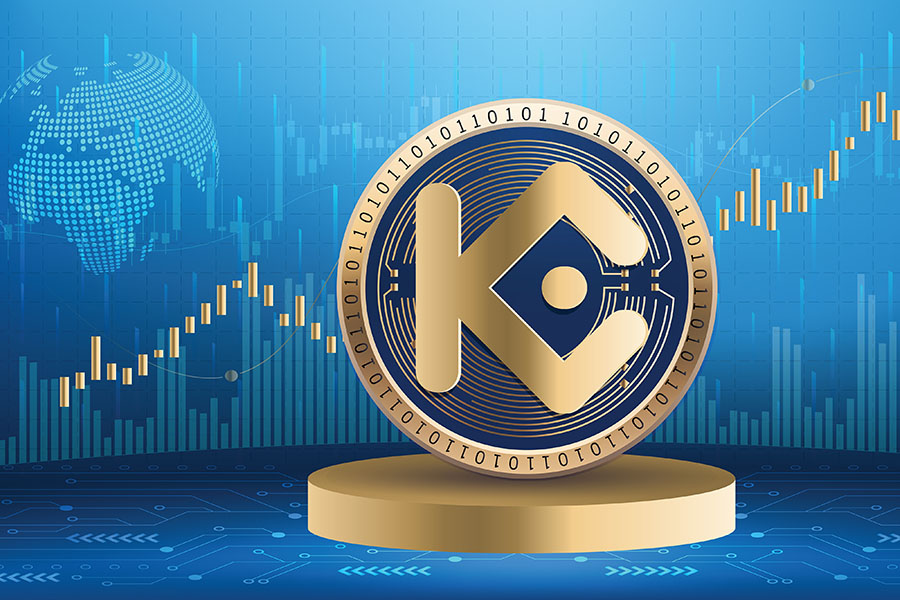-
 Bitcoin
Bitcoin $103,997.5100
1.60% -
 Ethereum
Ethereum $2,709.0335
10.64% -
 XRP
XRP $2.5893
5.17% -
 Tether USDt
Tether USDt $1.0000
-0.01% -
 Solana
Solana $184.0207
8.06% -
 BNB
BNB $664.0717
1.97% -
 USDC
USDC $0.9999
-0.02% -
 Dogecoin
Dogecoin $0.2404
7.48% -
 Cardano
Cardano $0.8295
4.51% -
 TRON
TRON $0.2726
2.47% -
 Sui
Sui $4.0208
3.99% -
 Chainlink
Chainlink $17.4470
6.67% -
 Avalanche
Avalanche $26.0698
8.41% -
 Stellar
Stellar $0.3144
3.75% -
 Shiba Inu
Shiba Inu $0.0...01638
7.31% -
 Pi
Pi $1.2893
18.57% -
 Hedera
Hedera $0.2148
3.88% -
 Hyperliquid
Hyperliquid $25.8809
7.71% -
 Toncoin
Toncoin $3.4547
5.53% -
 Polkadot
Polkadot $5.2357
6.33% -
 Bitcoin Cash
Bitcoin Cash $412.8180
2.74% -
 UNUS SED LEO
UNUS SED LEO $8.7560
1.35% -
 Litecoin
Litecoin $104.5010
3.31% -
 Monero
Monero $343.0870
2.43% -
 Pepe
Pepe $0.0...01440
9.20% -
 Bitget Token
Bitget Token $4.8288
2.36% -
 Dai
Dai $0.9999
-0.01% -
 Ethena USDe
Ethena USDe $1.0008
-0.01% -
 Uniswap
Uniswap $7.1145
6.58% -
 Bittensor
Bittensor $461.4044
2.05%
What is the issuance volume and circulation volume of KCS coin
The issuance volume of KCS is initially set at 200 million tokens, with a dynamic circulation volume influenced by factors like token burning and user adoption.
Nov 08, 2024 at 04:48 am

What is the Issuance Volume and Circulation Volume of KCS Coin?
KCS, the native token of the KuCoin exchange, has gained significant traction in the cryptocurrency market. Its issuance volume and circulation volume are key metrics that provide insights into the token's supply and distribution.
Issuance Volume
The issuance volume of KCS refers to the total number of tokens created and released into the market. The KuCoin exchange initially issued 200 million KCS tokens, representing the maximum supply of the token. However, the exchange has implemented a token burning mechanism, which reduces the issuance volume over time.
Steps to Calculate Issuance Volume:
- Determine the initial issuance amount: 200 million KCS
- Calculate the total burned tokens: This information is available on the KuCoin website or block explorers.
- Subtract the burned tokens from the initial issuance amount: Issuance volume = Initial issuance amount - Total burned tokens
Circulation Volume
The circulation volume of KCS represents the number of tokens that are currently in circulation. This includes tokens that are held by investors, used for trading, or staked on the KuCoin platform. The circulation volume is dynamic and can fluctuate based on factors such as token burns, user adoption, and market demand.
Steps to Calculate Circulation Volume:
- Determine the initial issuance volume: Use the issuance volume calculated in the previous section.
- Calculate the total burned tokens: This information is available on the KuCoin website or block explorers.
- Subtract the burned tokens from the initial issuance volume: Circulation volume = Initial issuance volume - Total burned tokens
Factors Influencing Issuance and Circulation Volume
- Token burning: KuCoin's token burning mechanism reduces the issuance volume and increases the scarcity of KCS. This can have a positive impact on the token's value.
- User adoption: As more users adopt the KuCoin exchange and use KCS for trading and staking, the circulation volume increases. This indicates increased demand for the token.
- Market conditions: The overall market conditions for cryptocurrencies can influence the issuance and circulation volume of KCS. Fluctuations in the crypto market can impact the demand for the token and its value.
Importance of Issuance and Circulation Volume
- Supply and demand: The issuance and circulation volume provide insights into the supply and demand dynamics of KCS. A low issuance volume and high circulation volume indicate scarcity and potentially higher demand.
- Token value: The issuance and circulation volume can influence the token's value. A controlled issuance and a reduction in circulation through token burning can support the token's long-term value.
- Decision-making: Understanding the issuance and circulation volume helps investors and traders make informed decisions about acquiring, holding, or trading KCS.
Disclaimer:info@kdj.com
The information provided is not trading advice. kdj.com does not assume any responsibility for any investments made based on the information provided in this article. Cryptocurrencies are highly volatile and it is highly recommended that you invest with caution after thorough research!
If you believe that the content used on this website infringes your copyright, please contact us immediately (info@kdj.com) and we will delete it promptly.
- XRP Has Gained Significant Momentum, Posting a Sharp 24% Rally Since Last Week
- 2025-05-14 10:07:01
- OpenFundNet Emerges as Decentralized Crowdfunding Alternative to XRP, Kaspa, and Cardano Use Cases
- 2025-05-14 10:07:01
- XRP Targets $20, DOGE Surges to $1.9B in Volume, and BlockDAG Presale Hits $241M
- 2025-05-14 10:01:55
- Bernstein Sees $16B Surge as Coinbase Joins S&P 500
- 2025-05-14 10:01:55
- Bitcoin (BTC) Creator Satoshi Nakamoto's Estimated Fortune Surges Past Bill Gates' Wealth
- 2025-05-14 09:55:13
- Like Father, Like Sons. Donald Trump's Sons Are Launching Their Own Bitcoin Mining Venture.
- 2025-05-14 09:55:13
Related knowledge

What is Ethereum’s Slashing mechanism and how to punish malicious behavior?
Feb 20,2025 at 03:08am
Key PointsOverview of slashingDifferent types of slashing in EthereumIncentives and consequences of slashingIdentifying and reporting slashed validatorsOngoing discussions and potential improvementsEthereum's Slashing Mechanism: Punishing Malicious BehaviorEthereum's slashing mechanism is an essential tool for ensuring network security and punishing mal...

What is the verifier node of Ethereum and how to become a verifier?
Feb 19,2025 at 06:00pm
The Verifier Node of Ethereum: A Comprehensive GuideKey Points:What is a Verifier Node?How to Become a Verifier NodeResponsibilities and Rewards of a Verifier NodeMinimum Requirements for Becoming a Verifier NodePotential Difficulties in Running a Verifier Node1. What is a Verifier Node?A Verifier Node is an independent entity on the Ethereum network th...

What is Ethereum’s staking, and how to participate and earn money?
Feb 19,2025 at 04:37pm
Key Points:Understanding Ethereum's Staking MechanismSteps to Participate in StakingBenefits and Rewards of StakingSecurity and Risk ConsiderationsTechnical Requirements and Hardware OptionsPotential Challenges and Troubleshooting TipsFAQs on Ethereum StakingWhat is Ethereum's Staking?Proof-of-Stake (PoS) is a consensus mechanism used in blockchain netw...

What is Ethereum’s DAO (Decentralized Autonomous Organization) and how does it work?
Feb 20,2025 at 03:12am
Key PointsDefinition and Structure of a DAOGovernance and Decision-Making in DAOsBenefits and Use Cases of DAOsChallenges and Limitations of DAOsWhat is Ethereum's DAO (Decentralized Autonomous Organization) and How Does It Work?Definition and Structure of a DAOA Decentralized Autonomous Organization (DAO) is an innovative governance and management fram...

What is Ethereum's multi-signature wallet and how to improve security?
Feb 20,2025 at 02:18pm
Key Points:Understanding the Concept of a Multi-Signature WalletBenefits and Drawbacks of Multisig WalletsRequirements for Setting Up a Multisig WalletStep-by-Step Guide to Generating a Multisig WalletImplementing Strategies for Enhanced Security1. Understanding the Concept of a Multi-Signature WalletA multi-signature (multisig) wallet in the Ethereum e...

What is Ethereum's oracle and how to provide data for smart contracts?
Feb 21,2025 at 01:30am
Key Points:Understanding the concept of oracles in EthereumExploring different types of oraclesDetailed guide on how to provide data for smart contractsAddressing potential challenges and considerationsWhat is Ethereum's Oracle?Oracles are crucial components in the Ethereum ecosystem, enabling smart contracts to access real-world data and off-chain even...

What is Ethereum’s Slashing mechanism and how to punish malicious behavior?
Feb 20,2025 at 03:08am
Key PointsOverview of slashingDifferent types of slashing in EthereumIncentives and consequences of slashingIdentifying and reporting slashed validatorsOngoing discussions and potential improvementsEthereum's Slashing Mechanism: Punishing Malicious BehaviorEthereum's slashing mechanism is an essential tool for ensuring network security and punishing mal...

What is the verifier node of Ethereum and how to become a verifier?
Feb 19,2025 at 06:00pm
The Verifier Node of Ethereum: A Comprehensive GuideKey Points:What is a Verifier Node?How to Become a Verifier NodeResponsibilities and Rewards of a Verifier NodeMinimum Requirements for Becoming a Verifier NodePotential Difficulties in Running a Verifier Node1. What is a Verifier Node?A Verifier Node is an independent entity on the Ethereum network th...

What is Ethereum’s staking, and how to participate and earn money?
Feb 19,2025 at 04:37pm
Key Points:Understanding Ethereum's Staking MechanismSteps to Participate in StakingBenefits and Rewards of StakingSecurity and Risk ConsiderationsTechnical Requirements and Hardware OptionsPotential Challenges and Troubleshooting TipsFAQs on Ethereum StakingWhat is Ethereum's Staking?Proof-of-Stake (PoS) is a consensus mechanism used in blockchain netw...

What is Ethereum’s DAO (Decentralized Autonomous Organization) and how does it work?
Feb 20,2025 at 03:12am
Key PointsDefinition and Structure of a DAOGovernance and Decision-Making in DAOsBenefits and Use Cases of DAOsChallenges and Limitations of DAOsWhat is Ethereum's DAO (Decentralized Autonomous Organization) and How Does It Work?Definition and Structure of a DAOA Decentralized Autonomous Organization (DAO) is an innovative governance and management fram...

What is Ethereum's multi-signature wallet and how to improve security?
Feb 20,2025 at 02:18pm
Key Points:Understanding the Concept of a Multi-Signature WalletBenefits and Drawbacks of Multisig WalletsRequirements for Setting Up a Multisig WalletStep-by-Step Guide to Generating a Multisig WalletImplementing Strategies for Enhanced Security1. Understanding the Concept of a Multi-Signature WalletA multi-signature (multisig) wallet in the Ethereum e...

What is Ethereum's oracle and how to provide data for smart contracts?
Feb 21,2025 at 01:30am
Key Points:Understanding the concept of oracles in EthereumExploring different types of oraclesDetailed guide on how to provide data for smart contractsAddressing potential challenges and considerationsWhat is Ethereum's Oracle?Oracles are crucial components in the Ethereum ecosystem, enabling smart contracts to access real-world data and off-chain even...
See all articles






















































































